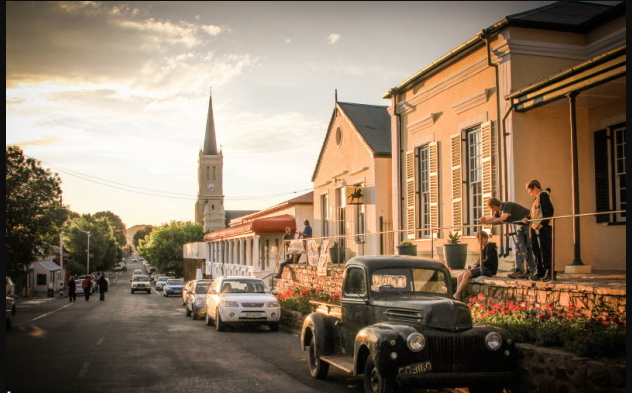
The Village of Richmond was established in 1844 on a portion of the Farm Driefontein, owned by P J van der Merwe. It was named after the Earl of Richmond, father-in-law of Sir Peregrine Maitland, Governor of the Cape Colony from 1844 to 1847. The 1865 census indicated that Richmond had a population of 898. In 1875 this number had risen to 995, and in 1891 it was 1,236. By 1904 it stood at 2, 001, of whom 818 were literate.
On 25 June 1901, during the Second Anglo Boer War, Boer forces under General P H Kritzinger attacked Richmond. They managed to enter part of the town and loot some stores.
The Northern Cape town of Richmond, just off the N1, is a sleepy little Settlement most days of the week. You’ll see farmers talking to one another in the street, normal Township activity and the odd dribble of tourists at the Horse Museum. And look out for the ever-present traffic cops near the 80 km/h zone on the N1. But when it’s time for a literary festival in Richmond – and at last count there were at least three on the annual calendar – it’s a totally different story. Hundreds of book lovers and festival fans stream in from all corners of South Africa to listen to authors presenting their latest works, rootle around in the main street bookshops and feast on all things Karoo. The Richmond Boekbedonnerd event – traditionally held late in October – began some years ago when a KwaZulu-Natal lecturer called Darryl David got together with a Canadian vet called Peter Baker and they brought the international Booktown concept to the Karoo. Baker already had the Richmond Supper Klub – a bit of a pop-up pub and feasting venue – and other associates had the bookshops. Darryl David brought the inspiration and the marketing and the rest is Karoo history.
By Franco Frescura
http://karoospace.co.za/richmond/